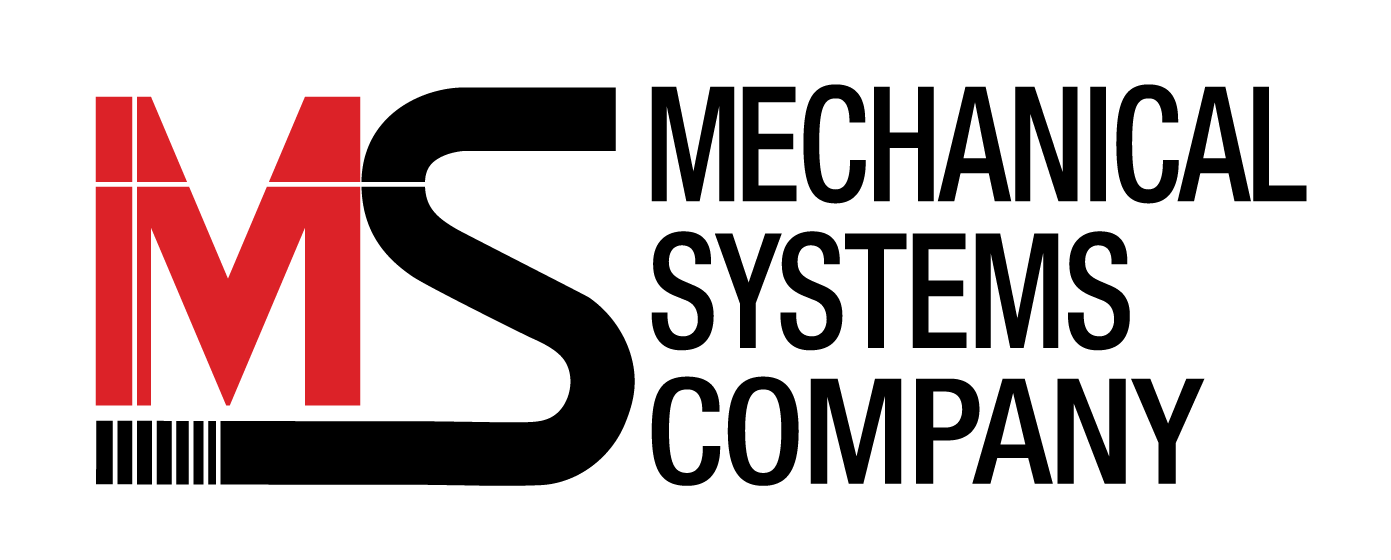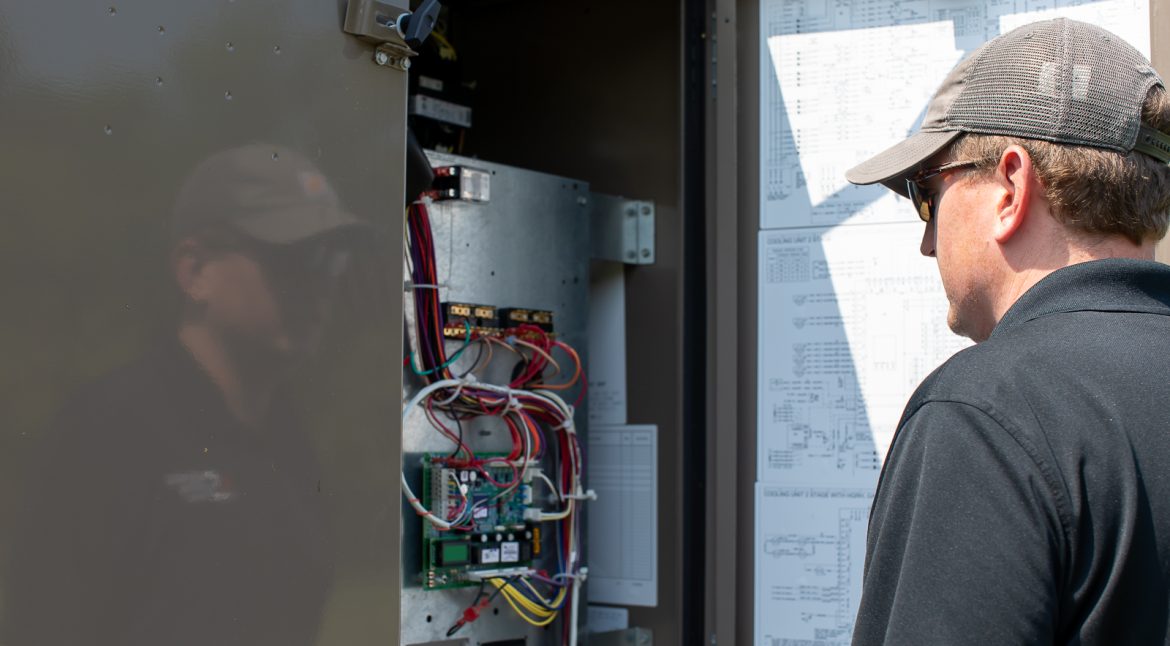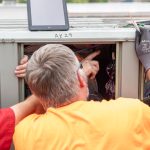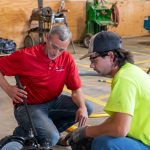When summer temperatures hit their peak, there’s no margin for error. For commercial and industrial buildings across the mid-south region, the HVAC system is a critical part of daily operations. Whether it’s keeping a production line cool, maintaining indoor air quality for tenants or ensuring temperature-sensitive materials stay safe, a reliable HVAC system is non-negotiable.
But with high heat and humidity pushing equipment to its limits, the risk of failure increases dramatically. That’s why now—before the hottest weeks of the year arrive—is the most important time to prioritize preventative maintenance.
At Mechanical Systems Company, we’ve helped facility managers stay ahead of midsummer breakdowns for decades. Let’s take a closer look at why preventative HVAC care matters and how you can make sure your systems are ready for anything the season throws at them.
The High Cost of Summer Heat
In the Mid-South region of the United States, summer doesn’t gradually roll in. It arrives fast, bringing heavy humidity and temperatures that can soar well into the 90s and feel well into the 100s. This puts commercial HVAC systems under maximum load. Units run longer, compressors work harder and there’s less recovery time between cooling cycles. All of this can accelerate wear and tear on equipment that may already be operating near capacity.
The result is unexpected breakdowns that can disrupt your business, force emergency repairs and in some cases, put the health and safety of your staff or customers at risk. But most of these issues don’t come out of nowhere. The warning signs are often there and easy to miss without regular inspections. That’s where preventative maintenance becomes your most valuable tool.
What Summer Strain Looks Like On Your HVAC System
You may not see it right away, but your HVAC system feels the impact of summer the moment the temperature starts to climb. If you manage a large facility, you may notice symptoms like rising energy bills, fluctuating indoor temperatures or unusual noises from rooftop units. These are all signs that the system is working harder than usual.
Even newer equipment is susceptible to summer strain, especially if it hasn’t been inspected since the last peak season. As the system runs longer to keep temperatures steady, internal components generate more heat, airflow can become restricted and any small inefficiencies start to multiply.
Here’s how that summer strain typically shows up:
- Longer cooling cycles: Your system takes more time to meet thermostat setpoints, using more energy and wearing out faster.
- Higher humidity indoors: A struggling system may not remove moisture effectively, creating uncomfortable conditions and increasing the risk of mold or mildew.
- Poor airflow: Clogged filters, blocked vents or failing fans can reduce air circulation, leaving some zones undercooled.
- Spikes in electricity usage: More runtime leads to higher demand, especially during peak hours, which can drive up utility costs.
Left unaddressed, these small problems can turn into critical failures, often at the worst possible time.
Common Summer Failures We See in the Field
Our service teams are on the front lines of HVAC performance every summer. When emergency calls come in, we know what to expect and how often those situations could have been prevented with routine maintenance. Here are the most common failures we respond to during peak season:
1. Frozen Evaporator Coils
While it might seem counterintuitive, coils can freeze even during extreme heat. Low refrigerant, dirty filters or poor airflow can cause the evaporator coil to ice over, which blocks cooling and shuts down the system.
2. Refrigerant Leaks
Low refrigerant levels force the compressor to work harder, increasing the risk of burnout. In summer, that added stress can quickly turn a small leak into a major repair.
3. Electrical Failures
From capacitor burnouts to loose wiring, electrical components are among the first to fail under heavy load. If left unchecked, a single failed relay or fuse can take down your entire system.
4. Blocked Condenser Coils
Outdoor units are exposed to dust, debris and pollen, all of which can clog coils and reduce heat transfer efficiency. During summer, that leads to overheating and system shutdowns.
5. Short Cycling
This happens when your system turns on and off too frequently, often due to a malfunctioning thermostat or clogged filters. It increases energy use and accelerates wear on key components.
These failures don’t just cause discomfort but create operational risks, reduce productivity and strain your budget. That’s why catching them early is essential.
The Power of Preventative Maintenance
Preventative maintenance is about planning. Scheduling routine inspections and tune-ups before the peak season hits gives your HVAC system the best chance to perform at its highest level when you need it most.
We build our preventative maintenance plans at Mechanical Systems Company around your equipment, your facility type and your operating demands. We don’t believe in a one-size-fits-all checklist; instead, we create a plan tailored to your building’s specific needs.
A typical HVAC maintenance visit includes:
- Checking and replacing air filters
- Cleaning condenser and evaporator coils
- Inspecting electrical connections and tightening where needed
- Verifying refrigerant levels and checking for leaks
- Testing thermostat calibration and control sequences
- Inspecting belts, pulleys and fan motors for wear
- Ensuring proper airflow and return/exhaust ventilation
Each step is designed to reduce wear and tear, improve efficiency and prevent the kind of surprise failures that require emergency calls. And when you work with a team that knows your system inside and out, you gain peace of mind and reliability.
More Than Comfort: Why It Matters
The benefits of preventative maintenance go far beyond comfort. For many of our clients, especially those in manufacturing, healthcare or multi-tenant facilities, HVAC performance directly impacts operations. Here’s what you gain from investing in seasonal planning:
1. Reduced Emergency Repairs
Routine checks dramatically lower the risk of urgent failures, especially in the middle of a heat wave. You’ll spend less time waiting for a tech to arrive and more time running your business without interruption.
2. Improved Energy Efficiency
A clean, well-maintained system doesn’t have to work as hard to deliver results. That means lower utility costs, especially during high-demand months when every kilowatt-hour counts.
3. Safer Indoor Conditions
In facilities where air quality, humidity control and consistent temperatures are critical, a reliable system is a safety issue, not just a convenience.
4. Predictable Budgeting
With preventative maintenance, you can plan repairs in advance, allocate your monthly budget for mechanical systems and avoid unexpected expenses. It’s easier to manage costs when you’re not reacting to emergencies.
Why Early Summer Inspections Matter
We can’t stress this enough: timing matters.
The best time to inspect your HVAC system is before the July and August heat arrives in full force. Once we’re in the middle of peak season, emergency calls can create scheduling difficulties and cause system strain increases. A minor issue in June could become a major failure by mid-July.
By acting now, you get ahead of the demand curve. Planning early allows for smoother scheduling and ensures any parts or repairs can be addressed with minimal disruption, and you have the opportunity to make informed decisions, not rushed ones.
Stay Ahead of the Heat
When summer puts pressure on your operations, the last thing you need is an HVAC failure. At Mechanical Systems Company, we help our clients avoid those headaches through proven preventative maintenance programs tailored to their needs.
We’ve seen firsthand how investments in the future pay off in big ways: less downtime, lower energy costs and more control over your facility’s performance. Don’t wait until the heat pushes your system over the edge. Let’s make sure you’re ready for the season ahead.
Contact us today to schedule your summer maintenance and keep your facility running strong, no matter how high the temperature climbs.



